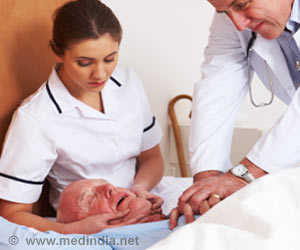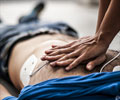Cardiopulmonary resuscitation is more likely to be performed by members of the public, when they witness someone having a cardiac arrest, in counties with higher median household incomes.

The research team, led by Benjamin Abella, MD, MPhil, clinical research director of the Center for Resuscitation Science, examined data on 7,137 cardiac arrest cases across 47 counties in 2012 and 2013 from Pennsylvania's Cardiac Arrest Registry to Enhance Survival (CARES). They also found that patients who suffered cardiac arrests in areas with higher bystander CPR rates were more likely to have their heart function restored (also known as return of spontaneous circulation, or ROSC), the desired outcome after cardiac arrest.
Each year, more than 350,000 people experience cardiac arrest outside of a hospital setting, but only 10 percent survive the event. In fact, a victim's chance of survival decreases by 10 percent with each passing minute. However, previous studies have shown that bystander CPR can quadruple their chance of survival.
The study revealed that less than one in 14 bystanders performed CPR in the majority of the lowest-performing group, which had a median household income of $43,611 (± $5,038), resulting in a ROSC rate of 1.5 percent. However, in the highest-performing group, which had a median household income of $50,225 (± $6,661), about half of the bystanders performed CPR, resulting in a ROSC rate of 23.3 percent. However, the study did not find a significant correlation between bystander CPR rates and education level, people below poverty status or population density.
"There's a variety of potential reasons why bystanders in lower-income counties may be less likely to perform CPR, the most prominent of which is a lack of resources to train people in this lifesaving skill," said Li. "Another contributing factor may be bystander hesitance to perform mouth-to-mouth on a stranger, but research supports hands-only CPR as an effective approach in most cardiac arrest incidents, making this concern irrelevant."
Advertisement










